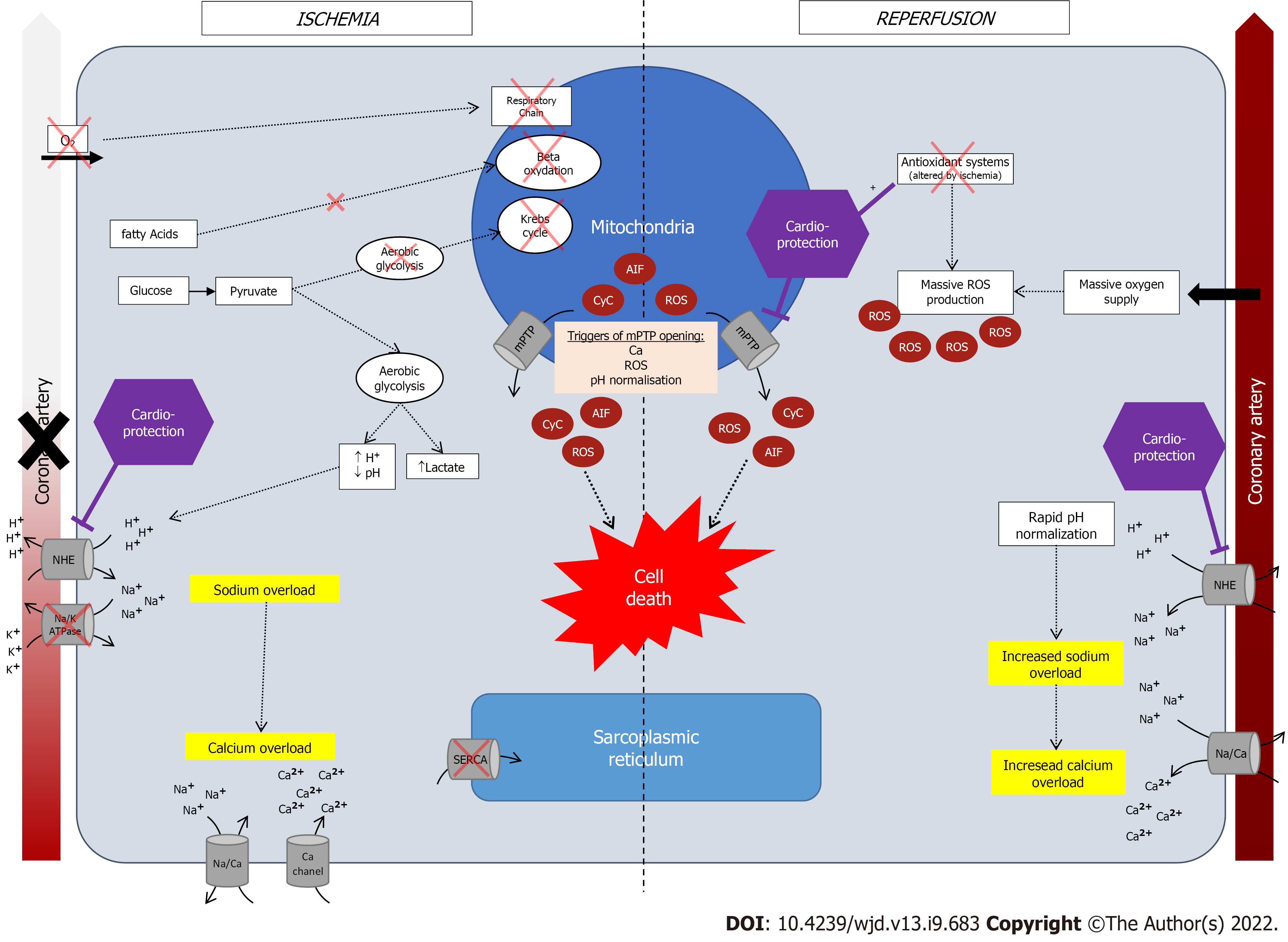Copyright
©The Author(s) 2022.
World J Diabetes. Sep 15, 2022; 13(9): 683-695
Published online Sep 15, 2022. doi: 10.4239/wjd.v13.i9.683
Published online Sep 15, 2022. doi: 10.4239/wjd.v13.i9.683
Figure 1 Simplified physiopathology of ischemia/reperfusion injuries and cardio-protection.
During ischemia, lack of oxygen leads to mitochondrial respiratory chain failure. ATP is produced mainly by using anaerobic glycolysis leading to acidosis and increase in lactate. Intracellular accumulation of H+ activates the Na/H exchanger causing a sodium overload and calcium overload. All of these phenomenon result in mitochondrial permeability transition pore (mPTP) opening and release of reactive oxygen species (ROS), cytochrome C and AIF leading to cell death. During reperfusion, sudden oxygen supply led to massive ROS formation that are not eliminated by antioxidant systems (which have been damaged by ischemia). The rapid pH normalization increased the sodium and calcium overload (= pH paradox). mPTP opening is also increased. Cardio-protection strategies lead to inhibition of NHE, mPTP opening, or restauration of antioxidant systems. AIF: Apoptosis inducing factor; CyC: Cytochrome C; mPTP: Mitochondrial permeability transition pore; NHE: Na/H exchanger; ROS: Reactive oxygen species.
- Citation: Quentin V, Singh M, Nguyen LS. A review of potential mechanisms and uses of SGLT2 inhibitors in ischemia-reperfusion phenomena. World J Diabetes 2022; 13(9): 683-695
- URL: https://www.wjgnet.com/1948-9358/full/v13/i9/683.htm
- DOI: https://dx.doi.org/10.4239/wjd.v13.i9.683









